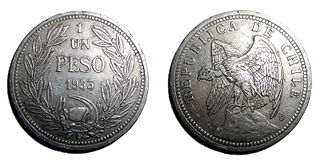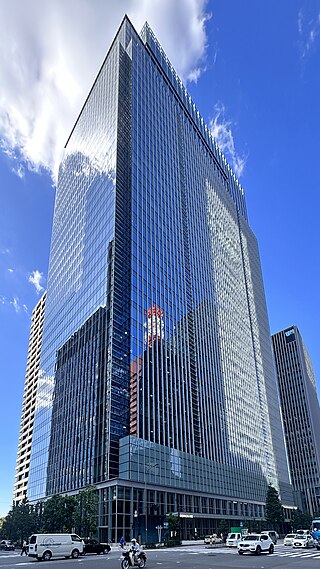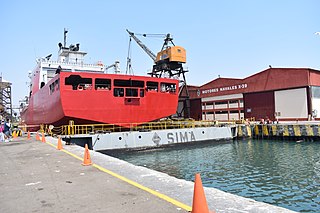Business Interests
Piaggio formed one of the first large business groups in the South American region, with interests spanning everything from finance, commerce, services, mining, and oil. In 1907, based on a University of Pennsylvania letter, Faustino Piaggio owned the oil fields of Zorritos and Los Organos, an oil refinery, several ships, a major trading company working between Callao and Genoa, finance holdings, mines, land holdings, and had a fortune worth about 24 million dollars. He was a large shareholder and board member of the Banco de Peru y Londres, the largest South American bank of its day, major shareholder at Banco Italiano. Owned a large sodium nitrate mine called Compania Salitrera La Aguada de Pisagua (mineral fertilizer saltpeter), silver and zinc mines under Minera Nueva Italia, and owned 60% of the Compania Nacional de Cerveza, maker of Pilsen Callao (this brewery and the industrial/financial conglomerate attached to it was the last large business controlled by his heirs, it was sold to a competitor in 1994). He also had land development businesses through Cia. Immobiliaria la Legua, developing what is today the largest industrial park in Callao, Lima. His farm holdings spanned some 20,000 hectares that the Peruvian government nationalized in 1972, in a countrywide land redistribution scheme. Faustino G. Piaggio died on February 9, 1924, leaving six children, Clelia Piaggio de Lercari, Attilio Piaggio Basso, Pia Piaggio de Sissa, Umberto Piaggio Basso, Ada Piaggio de Lanata, and Ezio Piaggio Basso.

Lima, founded in 1535 as the Ciudad de los Reyes, is the capital and largest city of Peru. It is located in the valleys of the Chillón, Rímac and Lurín Rivers, in the desert zone of the central coastal part of the country, overlooking the Pacific Ocean. The city is considered the political, cultural, financial and commercial center of Peru. Due to its geostrategic importance, the Globalization and World Cities Research Network has categorized it as a "beta" tier city. Jurisdictionally, the metropolis extends mainly within the province of Lima and in a smaller portion, to the west, within the Constitutional Province of Callao, where the seaport and the Jorge Chávez Airport are located. Both provinces have regional autonomy since 2002.

Chuquicamata is the largest open pit copper mine in terms of excavated volume in the world. It is located in the north of Chile, just outside Calama, at 2,850 m (9,350 ft) above sea level. It is 215 km (134 mi) northeast of Antofagasta and 1,240 km (770 mi) north of the capital, Santiago. Flotation and smelting facilities were installed in 1952, and expansion of the refining facilities in 1968 made 500,000 tons annual copper production possible in the late 1970s. Previously part of Anaconda Copper, the mine is now owned and operated by Codelco, a Chilean state enterprise, since the Chilean nationalization of copper in the late 1960s and early 1970s. Its depth of 850 metres (2,790 ft) makes it the second deepest open-pit mine in the world, after Bingham Canyon Mine in Utah, United States.

Repsol S.A. is a Spanish multinational energy and petrochemical company based in Madrid. It is engaged in worldwide upstream and downstream activities. In the 2022 Forbes Global 2000, Repsol was ranked as the 320th-largest public company in the world. As of 2022, it has 24,000 employees worldwide.

The economy of Chile has shifted substantially over time from the heterogeneous economies of the diverse indigenous peoples to an early husbandry-oriented economy and finally to one of raw material export and a large service sector. Chile's recent economic history has been the focus of an extensive debate, as it pioneered neoliberal economic policies.

Since the colonial era, the economic history of Mexico has been characterized by resource extraction, agriculture, and a relatively underdeveloped industrial sector. Economic elites in the colonial period were predominantly Spanish-born, active as transatlantic merchants and mine owners, and diversifying their investments with the landed estates. The largest population sector was indigenous subsistence farmers, which predominantly inhabited the center and south.

Ecopetrol, formerly known as Empresa Colombiana de Petróleos S.A. is the largest and primary petroleum company in Colombia. As a result of its continuous growth, Ecopetrol forms part of the Fortune Global 500 and was ranked 346. In the 2020 Forbes Global 2000, Ecopetrol was ranked as the 313th -largest public company in the world. It was ranked 303 in 2012 by CNN Money.

Petróleos del Perú, better known as Petroperú, is a Peruvian state-owned enterprise and private law dedicated to the transportation, refining, distribution, and commercialization of fuels and other petroleum products. It has been owned by the State of Peru since 1969, is considered among the taxpayers to the treasury, and currently employs more than 2,500 people. Petroperú invests in education, health, and other sustainable development projects throughout the Peruvian territory.
Alicorp is the largest Peruvian consumer goods company, with operations in South America.

Mitsui & Co., Ltd. is one of the largest sogo shosha in Japan; it is part of the Mitsui Group.

Italian Peruvians are Peruvian-born citizens who are fully or partially of Italian descent, whose ancestors were Italians who emigrated to Peru during the Italian diaspora, or Italian-born people in Peru. Among European Peruvians, Italians were the second largest group of immigrants to settle in the country. Italian immigration in Peru began in the colonial era, during the Spanish Viceroyalty of Peru.

The history of Lima, the capital of Peru, began with its foundation by Francisco Pizarro on January 18, 1535. The city was established on the valley of the Rímac River in an area populated by the Ichma polity. It became the capital of the Viceroyalty of Peru and site of a Real Audiencia in 1543. In the 17th century, the city prospered as the center of an extensive trade network despite damage from earthquakes and the threat of pirates. However, prosperity came to an end in the 18th century due to an economic downturn and the Bourbon Reforms.

Servicios Industriales de la Marina S.A., well known as SIMA or SIMA PERU S.A., is a Peruvian shipyard that operates as a state owned company established under private law in 1950 pursuing the activities of the former Naval Factory founded in 1845, and continually extending its operational capacity, first to the shipbuilding which SIMA pioneered in South America and then to the greatest metalworking structures manufacture, contributing to the defense and socio-economic development of Peru. The SIMA mainly serve the Navy of Peru as well as domestic and foreign private clients through a wide range of products.

The mineral industry of Peru has played an important role in the nation's history and been integral to the country's economic growth for several decades. The industry has also contributed to environmental degradation and environmental injustice; and is a source of environmental conflicts that shape public debate on good governance and development.
Credicorp is a financial services holding company in Peru with a presence in Colombia, Bolivia, Chile, Panama and the United States. It currently has a universal banking, insurance and pension platform, with a microfinance, investment banking and wealth management presence in Latin America. Krealo, the innovative arm of the corporation, creates and invests in fintechs and startups in Latin America.
Quiñenco S.A is a Chile-based company engaged in the investment in companies active in the industrial and financial sectors. It is one of Chile’s largest business conglomerates, with US$71 billion in assets under management. Founded in 1957 by Andrónico Luksic, Quiñenco is controlled by Chile’s Grupo Luksic.
Grupo Breca, also known as Grupo Brescia, is a Peruvian business conglomerate founded more than 130 years ago with operations in Peru and other countries in Latin America. Fortunato Brescia and his wife, Mrs. María Catalina Cafferata, are the group's founders. Their last names Brescia and Cafferata gave rise to the "Breca" brand, which reflects the memory of its founders.
Roque Eduardo Benavides Ganoza is a Peruvian engineer, businessman, and mining magnate, who is the chairman and former CEO of Compañía de Minas Buenaventura. A leading businessman in the mining sector, Benavides is considered one of the most powerful Peruvian entrepreneurs, and has a net worth of US$2 billion as of March 2013, making him the fifth-wealthiest person in Peru.











